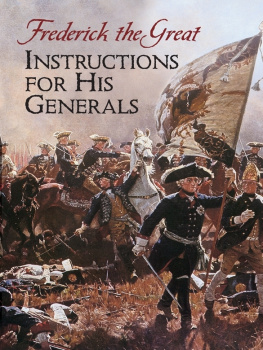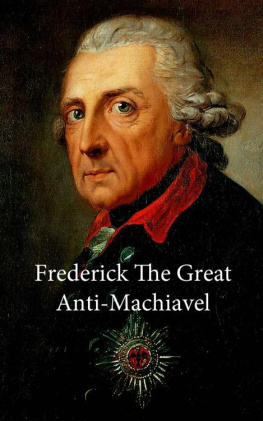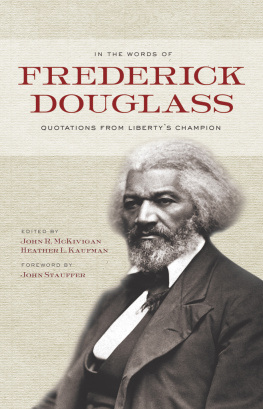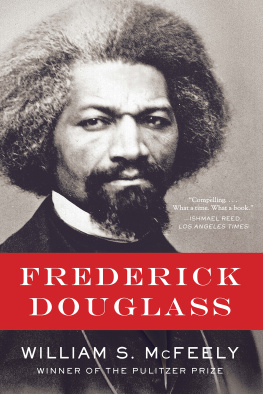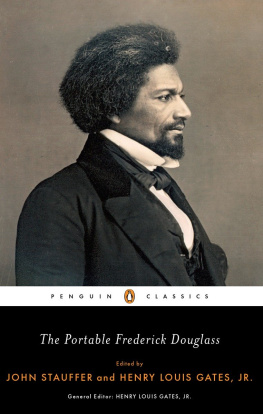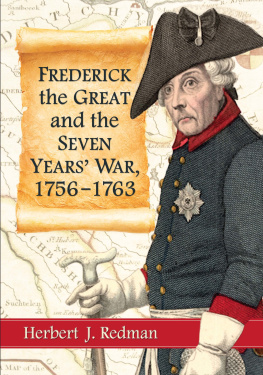
Fredericks Orders
Frederick the Greats Orders to His Generals and His Way of War
By Frederick Hohenzollern
Published by Winged Hussar Publishing, LLC
1525 Hulse Road, Unit 1, Point Pleasant, NJ 08742
https://www.Wingedhussarpublishing.com
Copyright 2013 Vincent W. Rospond. All Rights Reserved. No content may be reproduced without the express written permission of the author.
First Edition
ISBN 978-1-62018-095-2
This e-book edition was created at FoliumBookStudio.com
Front Matter
Library of Congress in-Publication Data
Frederick II, King of Prussia, 1712 1786
Fredericks Orders: Frederick the Greats Orders and His Way of War,
edited by Vincent W. Rospond
Frederick II orders to his generals
LCCN 2013930621
ISBN: 978-0615-75471-0
E-ISBN: 978-1620-18095-2
Cover image is Von Belling Hussars by Kntel
Winged Hussar Publishing, LLC 2013
Introduction
In 1748, Frederick issued his Secret Instructions for his Generals, which embodied many of his ideas concerning every level of warfare, from strategy to minor tactics and logistics. This was written between the War of the Austrian Succession and the Seven Years War, originally written in French and did not have an authorized German translation until 1753. It was later titled General Principals of War Applied to the Tactics and Discipline of Prussian Soldiers and then it was only issued to Generals. It was unique in that no other army at this time had a similar set of guidelines for senior officers. There were no general staffs and no official documents that discussed modern military theory. The French and Austrian counterparts of Prussian generals spent a disproportionate amount of energy discussing these same details, but with less result.
According to the book, Great Captains Before Napoleon, about fifty copies were printed in 1753 and sent to officers in the army whom the King considered outstanding.[1] Each recipient was required to take an oath not to carry the book into the field and to take care that on his death his copy would be returned to the King. General Czettertiz, however, was captured by the Austrians during a minor action in February 1760, and his copy was found on him. It was then printed in German in 1761, then translated back into French, and printed in France later that year. It was then translated into English by Lieut.-Colonel T. Foster in 1762 under the title, Military Instructions by the King of Prussia. This edition is based on the 5th edition of 1818. This work contains the Kings philosophy of War and is well worth reading by any military student. It reveals how crystallized his ideas on strategy and tactics had become as a result of his experience in the Silesian Wars and explains the reasoning behind the audacity he displayed in the Seven Years War.
The Instructions to His Generals and Instructions to His Cavalry Generals were worked on in tandem over a number of years. Fredericks first notes on the use of cavalry were begun after the First Silesian War in 1744. According to Jay Luvaas, the Instructions to His Generals was completed in 1747 and Instructions to His Cavalry Generals was finished in 1748. Both were issued in 1748 and were put to use in 1756 with the beginning of the Seven Years War. Were these rules actually enforced? The answer is yes and no. In the battles Frederick fought, you can see instances of these military maxims in place in battles like Rossbach and Leuthen, but then again they were also employed in losses such as Kolin and Prague where the Prussians won a tactical victory, but was a strategic victory of Austria. If anything, these instructions were a guideline. Ironically, Frederick gave his generals very little leeway in independent command and when he did give them some, the success was mixed because many good officers were not trained to think independently. Thus, you have defeats at Maxen and Landshut that almost destroyed his efforts. Successful commanders such as Fredericks brother Henry or the Duke of Brunswick were self-assured generals that knew when to apply rules and when to discard them. It should be noted that while Frederick had some very good observations on the use of cavalry and light troops, he never seemed to fully integrate them into operations. Time and again it was found that his light cavalry was never fully used to screening, scouting, or delaying. It seems only through the efforts of exceptional cavalry commanders such as Seydlitz and Zieten that the cavalry was elevated to be used as they should.
A book that simply reprinted Fredericks instructions would only tell part of the story. There are events and influences that brought the king to the point of writing these instructions and events after that allowed him to put these theories into practice. Therefore, this edition of, Fredericks Instructions to His Generals, acts a little like a primer for Frederick the Great, his battles, and his military machine. We have outlined most of his major battles, giving you an overview of them, which after you read his instructions; you can appreciate where these rules have been applied and where they were discarded. We have tried to give you an overview of the politics, how war was conducted, the people it involved, and the places it took place to give a broader, world view of this document. If you want more detailed information on the period, start with the, Bibliography and Further Reading, to delve into more detail.
Frederick was born to Fredrick William I of Prussia no 24 January 1712. Frederick William was known as, the soldier king because of the way he had organized the Brandenburg-Prussia state around the military. Although Frederick William brought Frederick up to be a soldier, the future king was supposedly frail as a child and more bookish in his demeanor. He was so repelled by military life and his fathers treatment that he sought to escape with two friends to England. Frederick and one of his companions were captured, and because they were both considered Prussian officers, they were sentenced to death. Fredericks life was spared, but he was imprisoned, while his compatriot, Lieutenant Katte, was executed in 1730 while Frederick was forced to watch.
Frederick was placed in a cell until he agreed to accept his fathers wishes. He was eventually given small administrative tasks before being re-introduced into court life. Once he accepted these terms, he threw himself into studying military and applied what he had come to accept from enlightenment thinkers as logic to everyday problems. He went on to serve on the Rhine with a Prussian contingent under Eugene of Savoy during the War of Polish Succession. Frederick thought he could do a better job and started to formulate an approach to military strategy. Throughout his military life, Frederick was often on the edge of total defeat, but somehow he managed to survive in many cases despite his own mistakes. A man who survives these trials; however, to retain and enlarge his position can be viewed as, the Great.
Frederick began to make his mark on assuming the throne by attacking Silesia in 1741, in part based on the family grudge and in part on the opportunity. This coincides with Bavarias claim to the Hapsburg lands in an attempt to nullify the Pragmatic Sanction. He dealt with friends and foes alike with duplicity, and the end result was he was able to retain his conquests. Frederick then initiated the Seven Years War by attacking Saxony (ex-ally) because he feared being surrounded by Austria, (ex-ally) France, and Russia. He survived this barely and went on to secure his position, eventually grabbing bits of Poland along with Russia and Austria in 1772.
Next page


